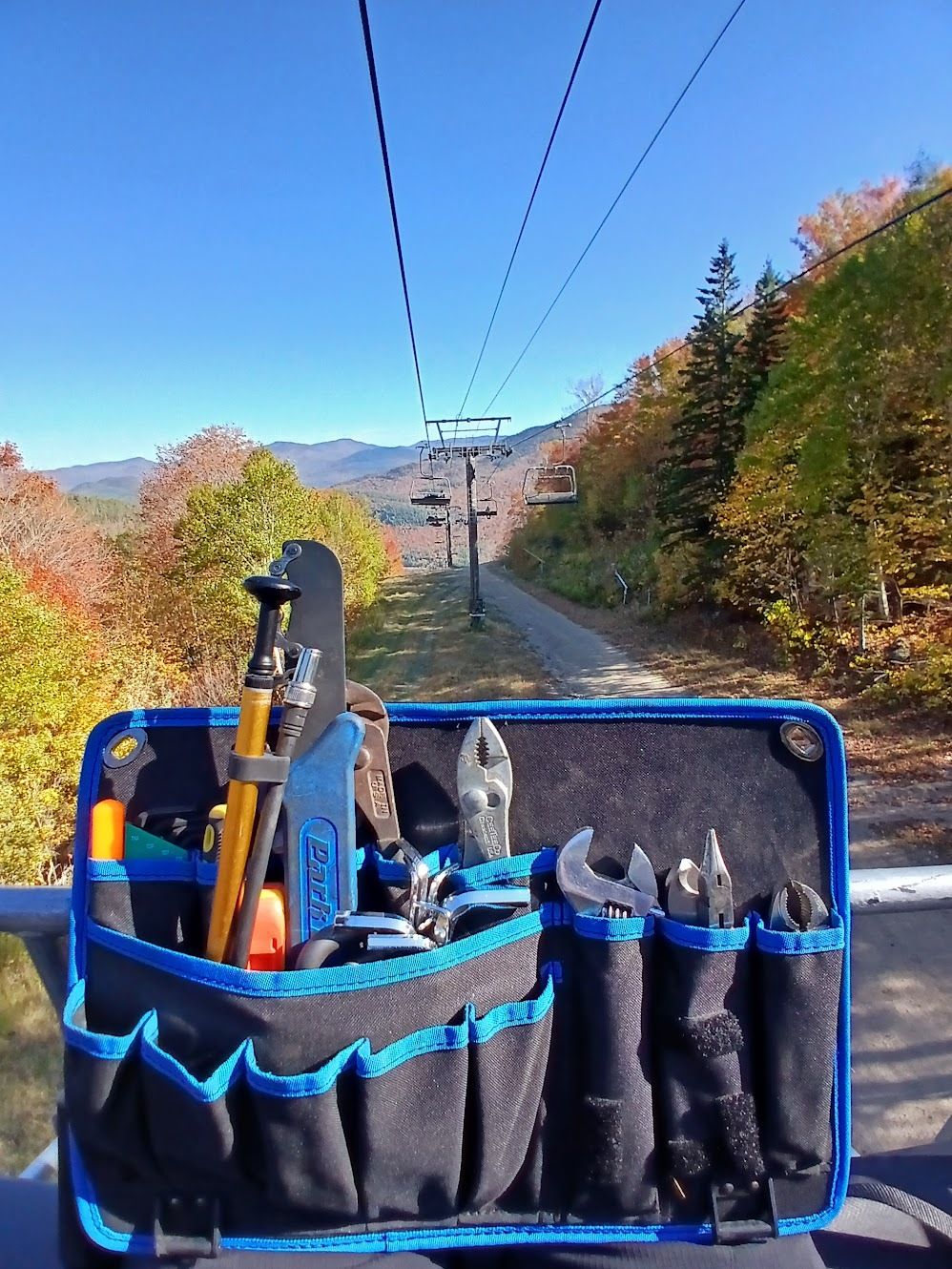This weekend, I had the opportunity to be a mechanic for some World Cup Downhill athletes. At moments it was stressful, but in the end, I really enjoyed the experience—and in an unexpected way.
About two weeks before the race, I was contacted by two junior racers on the Canadian national team who were looking for mechanical support for this race, and it didn't take long for me to say yes to this opportunity. I was just excited to be part of the action and to work on some cool bikes, too.
The way that the weekend was laid out was that on Thursday there were two practice sessions, each an hour and a half long. Then, on Friday there was another practice in the morning, followed by a qualification run where the top 20 junior riders could qualify for the final race on Saturday. The two athletes that I was helping were younger athletes, and qualifying would be a good result—and this was the main goal.
I got to the venue early on Thursday to find a good spot to set up a repair stand and be based out of for the rest of the week. I wasn't sure where we would be able to set up, but upon walking around, it seemed like we could pretty much set up wherever there was space. So, I was able to find a spot on the patio of the lodge that was going to work great for our purpose. There was a nice flat area with benches for the crew to relax in between training sessions.
A few moments later, the team started to arrive, and I was able to meet the crew and see the bikes. Everyone seemed laid-back, and the bikes were, of course, pretty sick. Every other type of mountain bike is a balancing act of uphill and downhill performance, whereas these bikes were purpose-built for one goal: going downhill fast.
As the crew was getting settled, I started to look over the bikes, and man, DH bikes are just cool. The bikes were in good shape and did not need a lot of adjustments to get going. As the riders were getting ready, I did a final check of the tire pressure with my digital gauge, and handed the bike off to them to go ride. This part is always a little scary. Luckily, as the days went on, there were never any problems that were caused by my neglect.
As the sessions went on, my focus was mostly on double-checking the bikes, and tweaking the setup to make the bike more suited to how the riders wanted to ride them on the track. In between runs we would briefly discuss how the bike was feeling and possible solutions, then I would change the shock setting, tire, or suspension pressure before they would head back up for another run.
While going back and forth, deliberating on how to optimize the bike setup, I found myself really enjoying this process. This type of collaboration is not something that I normally experience in my day-to-day wrenching on bikes, especially with riders who are as in tune with their bikes as these riders were.
I was caught off guard by how much I liked this type of collaboration, even though sometimes it felt trivial to change the fork pressure by 1 psi. There was something rewarding about working through the challenges of the track and toward the riders feeling more confident on the bike.

I have always been the type of person who has been happy to go my own way and do my own thing, but for me, this experience of working with the athletes was eye-opening in that it can be rewarding to work in a more collaborative way, too.
Ultimately, neither of the athletes I was helping qualified for the final race on Saturday; one crashed, and the other missed qualifying by one place and less than half a second. Regardless, it was just as rewarding to be part of the environment and to help some awesome riders. I really did enjoy the experience of working on bikes at this level, and I was not expecting to enjoy the collaboration as much as I did, and it makes me rethink how I want to tackle projects moving forward.
